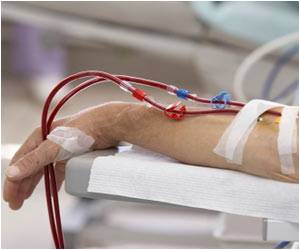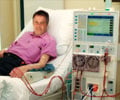Patients suffering from acute kidney injury prior to going on dialysis were more likely to die in their first year of dialysis as compared to patients without acute kidney injury

Charuhas Thakar, MD, associate professor in the division of nephrology and hypertension, and Anthony Leonard, PhD, biostatistician and research assistant professor of family and community medicine, teamed up with Timmy Lee, MD, University of Alabama at Birmingham, and Pratik Parikh, PhD, Wright State University in Dayton, Ohio, to conduct this research.
The team examined the medical records of 47,327 patients in the United States Renal Data System who started dialysis from Jan. 1 to Dec. 31, 2008, and had Medicare data available in the preceding two years, and followed their mortality rates until Dec. 31, 2010.
"At present, when we start patients on chronic dialysis, we do not necessarily consider AKI episodes in the recent history to be a prognostic indicator," Thakar says. "Many times this information is not even available. Our findings suggest, however, that AKI occurrence prior to chronic dialysis initiation should alert both the patient and the physician regarding a potentially poor outcome in the first year of dialysis."
AKI is marked by a sudden, temporary and sometimes fatal loss of kidney function. Rising incidence of this condition is related to an aging U.S. population and increasing need for hospitalization, Thakar says.
Thakar says the causes of AKI related to hospitalization include low blood pressure, dehydration, sepsis, heart failure and major surgeries such a cardiovascular surgery.Researchers also found that AKI during the pre-dialysis period reduces the likelihood that patients will start dialysis with a functioning arterio-venous access, which provides the safest level of dialysis care for patients, Thakar explains.
Advertisement
About 400,000 people are on some form of dialysis in the United States, according to the National Kidney and Urologic Diseases Information Clearinghouse (NKUDIC).
Advertisement
Thakar says physicians should take greater care in reducing the exposure of patients to kidney toxic medicines, ensuring early detection and treatment of sepsis and taking proper precautions during the perioperative period as some of the "common sense" steps to minimize the risk of AKI.
Thakar says the study has its limitations, adding: "These relationships are observational and not causally linked. More research needs to be done to understand whether this association plays out due to impacts on processes of care, or biology or both."
Thakar says that AKI may also be a marker of severity of illness in patients with dialysis and that further investigation is needed.
Source-Eurekalert














